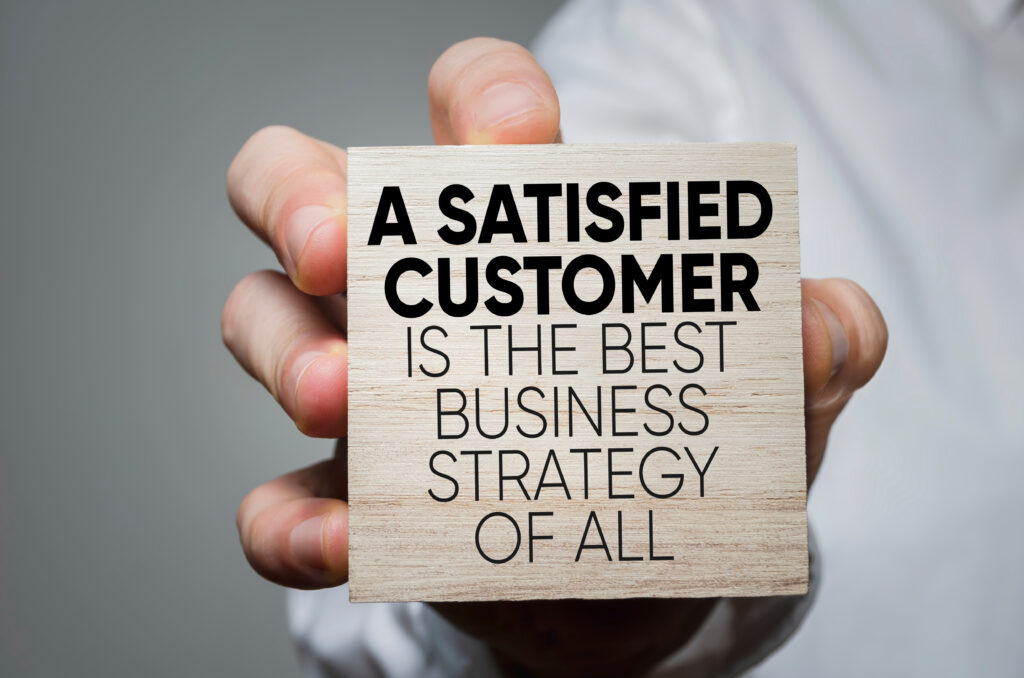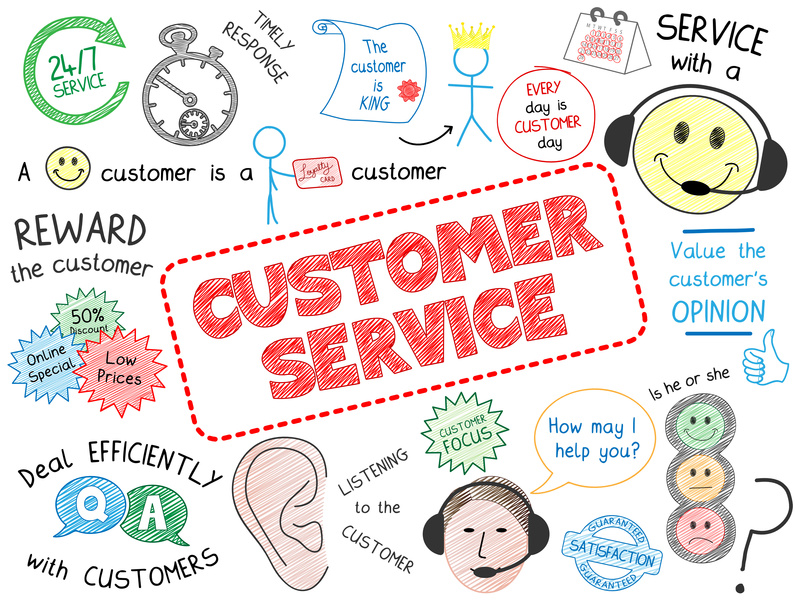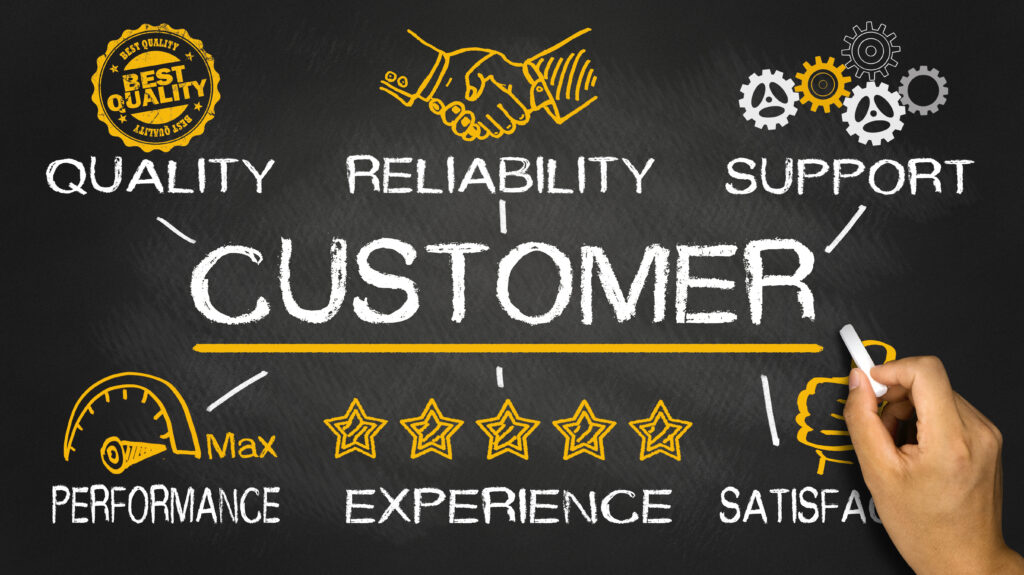
Transform Your Business: A Blueprint for Excellent Customer Experience
Transforming your business is about more than just sales and marketing strategies; it’s about creating an exceptional customer experience. Every interaction your customer has with your business, from initial contact to post-sales support, shapes their perception and determines their loyalty. This is why a truly successful transformation starts with designing an excellent customer experience. Our comprehensive blueprint is designed to guide you on this path, helping you understand how to identify potential pitfalls, discern their root causes, and make proactive changes that enhance customer satisfaction and drive your business success. Step into a journey of transformation that positions your business at the forefront of excellence in customer experience.
Understanding Your Customer Experience: A Crucial Starting Point
Before diving into strategies to transform your customer experience, it’s critical to understand what ‘customer experience’ truly means. At its core, customer experience encompasses every client interaction with your business, from their initial discovery and exploration of your product or service to the purchase and even post-purchase interactions.
The customer experience includes various touchpoints such as your website navigation, customer service responsiveness, product quality, checkout process, delivery timeliness, and after-sales service, to name a few. Each of these points contributes to the overall realization of your brand in the eyes of the customer.
Understanding your current customer experience is vital to identify strengths and weaknesses. To gain an accurate understanding, consider seeking feedback directly from your customers. Surveys, interviews, and customer reviews are valuable tools to garner insights into how your customers perceive their interactions with your business. Analyzing this feedback can provide a treasure trove of information about what you’re doing right and where improvements could be made.
Moreover, it’s important to remember that customer experience isn’t static; it evolves with customer preferences and expectations, market trends, and technological advancements. Thus, understanding the customer experience is not a one-time task but an ongoing process that aligns your business with your customer’s evolving needs.
By deeply understanding your customer experience, you lay a solid foundation for the steps ahead. In addition, this knowledge serves as a launchpad for designing strategies that truly resonate with your customers, ultimately transforming your business by boosting customer satisfaction, loyalty, and advocacy.
Analyze your Touchpoints

Touchpoints are where people can hear, see, and receive information about your brand or product; this is where people connect with your brand. No matter the channel, all touchpoints must have a consistent message, provide a great experience, and engage the potential customer in searching for more information. Even though unique, each interaction must be as equally good as all others, even if it is a meme, content, a blog, an image on Instagram, or a pin on Pinterest.
One bad experience and the potential customer will hesitate about checking any further. Therefore, keeping a brand message constant is primordial to promote trust. But what is brand message consistency? It refers to the uniformity of every component that forms the brand. For example, Coca-Cola’s lettering has been the same for years; the color red has not changed tones, the logo’s size is still the same, the ad guidelines are strict, and so on. Also, consistency is about being on your target channels, not on all media all the time.
Steps to Design Touchpoints:
_ Design a strategy per channel.
_Write the mechanism you will use to deliver your message: video, image, pin, blog, etc.
_In your plan, define what, where, how, and when.
_Keep all data related to each touchpoint.
_Analyze the data on each point to learn what worked and what didn’t.
For example, design new marketing campaigns but keep the message constant; this should be what the brand is about. Start small with simple ideas, let that campaign run, then run another, and so on until you learn to manage multiple touchpoints.
Evaluating Your Current Customer Experience: The Path to Improvement

Evaluating your current practices is an essential step in enhancing your business’s customer experience. This evaluation clearly shows your existing strategies’ effectiveness and highlights areas where enhancements are required.
There are several methods to conduct this evaluation, but they all revolve around one main principle: listening to your customers. Customer feedback is invaluable for understanding their experiences, perceptions, and expectations.
Customer Surveys: These are structured questionnaires you can send to your customers to gauge their satisfaction with different aspects of your business. Tools like Net Promoter Score (NPS), Customer Satisfaction Score (CSAT), and Customer Effort Score (CES) can provide quantifiable data about your customers’ experiences.
Direct Feedback: This can be gathered through channels like customer service emails, phone calls, and social media comments. Direct feedback provides candid insights into what your customers are thinking and feeling.
User Testing: For digital experiences, user testing can reveal a lot about the user experience. Watching real customers interact with your website or app can uncover issues you may have overlooked.
Analytics: Tools like Google Analytics can provide rich data about customer behavior on your website, such as which pages they spend the most time on and where they tend to drop off. These insights can indicate areas where the customer experience might be falling short.
As you gather this data, look for trends and recurring issues. For instance, if customers consistently report long wait times when contacting your customer service, that’s an area that requires attention.
Also, compare your findings to industry benchmarks to understand where you stand in relation to competitors and the industry average. This can help identify areas where you’re lagging and provide a clearer direction for your improvement efforts.
Remember, this evaluation isn’t a one-time process; it should be repeated regularly to ensure that your strategies stay relevant as customer needs and market conditions evolve. With a rigorous evaluation process in place, you can stay attuned to your customers’ experiences, helping you continuously refine your offerings and deliver an excellent customer experience that sets your business apart.
Identifying Areas of Improvement: Building a Better Customer Experience
Once you have a solid understanding of your current customer experience through a thorough evaluation, the next step is to identify specific areas for improvement. This step involves analyzing your gathered data to pinpoint where your customer experience may be falling short.
There are several areas where improvements may be needed. These can be broadly categorized into three main aspects: customer service, product or service quality, and process efficiency.
Customer Service: This includes how your team interacts with customers at every touchpoint, from sales to support. Pay attention to feedback about staff responsiveness, empathy, knowledge, and problem-solving skills. If your customers report feeling unvalued or misunderstood, it clearly indicates that your customer service needs improvement.
Product or Service Quality: This pertains to the core offering of your business. If customers express dissatisfaction with your product or service or if they report frequent issues or defects, this is an area that demands immediate attention. Ensure you are delivering a product or service that meets and exceeds customer expectations.
Process Efficiency: This involves the different processes that your customers go through when interacting with your business. For example, if customers report that your website is difficult to navigate or your checkout process is lengthy and complicated, these are signs that your processes could be more streamlined.
Identifying areas of improvement also involves recognizing gaps in your customers’ expectations and your current offerings. For instance, if your customers expect 24/7 customer support but you only offer support during business hours, this is a gap that needs to be addressed.
To prioritize the identified areas, consider their impact on the customer experience and your business. Then, prioritize improvements that can significantly enhance customer satisfaction and directly impact your business metrics, like customer retention and revenue.
Remember, the goal is to create a customer experience that not only meets but exceeds customer expectations. By identifying and addressing areas of improvement, you take a proactive approach to enhancing your customer experience, positioning your business for long-term success.
Design Your Customer Journey: Crafting a Seamless Experience

Designing your customer journey involves creating a detailed map of each touchpoint a customer has with your business, from their initial discovery to their post-purchase interactions. This step requires you to put yourself in your customers’ shoes and understand their needs, expectations, and feelings at every stage of their journey with you.
Step 1: Identify Customer Touchpoints
Start by identifying all the touchpoints a customer has with your business. This can include seeing an ad, visiting your website, interacting with customer service, receiving your product, and more. Remember to consider both online and offline touchpoints.
Step 2: Understand Customer Goals and Expectations
Next, understand what the customer wants to achieve at each touchpoint. For example, a customer visiting your website might want to learn more about your product, read reviews, or make a purchase. Understanding these goals can help you design a journey that meets and exceeds their expectations.
Step 3: Evaluate the Current Experience
Evaluate the current experience at each touchpoint. Is it easy for customers to achieve their goals? Are there any obstacles or points of friction? Use your evaluation from the previous steps to assess each touchpoint.
Step 4: Create a Journey Map
Based on your findings, create a customer journey map. This visual representation of the customer experience can help you and your team understand the flow of customer interactions and where improvements are needed.
Step 5: Identify Opportunities for Improvement
Look for opportunities to enhance the experience at each touchpoint. This could be simplifying the checkout process, improving customer service response times, or providing more detailed product information.
Step 6: Implement Changes and Test
Finally, implement the changes you’ve identified and test them. Use customer feedback and data to assess whether these changes are improving the customer experience.
By designing your customer journey, you create a more seamless and enjoyable experience for your customers. This not only improves their satisfaction but also builds stronger customer loyalty, leading to higher customer retention and ultimately boosting your business’s success.
Using Technology in Enhancing Customer Experience: Driving Innovation and Efficiency

In our increasingly digital world, technology plays a pivotal role in enhancing the customer experience. By leveraging innovative tools and platforms, businesses can streamline processes, provide personalized experiences, and offer round-the-clock customer support.
Customer Relationship Management (CRM) Systems: CRMs can help businesses better understand and manage their interactions with customers. By centralizing all customer data, including contact information, purchase history, and interactions with customer service, businesses can create a more personalized and responsive customer experience.
Chatbots and AI: Artificial Intelligence (AI), particularly in the form of chatbots, can be leveraged to provide instant customer support, answer common queries, and even assist in sales processes. This allows businesses to provide 24/7 assistance, improving the customer experience by offering immediate responses and solutions.
Self-Service Options: Technology can also facilitate self-service options, allowing customers to solve issues or find information on their own. This could include FAQ sections on your website, interactive voice response (IVR) systems, or even user forums.
Social Media Platforms: Businesses can use social media platforms not only to market their products but also to engage with customers, respond to queries, and gather feedback. This can foster stronger relationships and improve the overall customer experience.
Data Analytics: Advanced data analytics can be used to gather and analyze customer data from various touchpoints. These insights can be used to understand customer behavior and preferences, enabling businesses to personalize the customer experience and predict future needs.
Mobile Technology: With more and more customers using smartphones to interact with businesses, optimizing the mobile experience is crucial. This can be achieved through mobile-friendly websites or dedicated mobile apps that enhance the convenience and ease of customer interactions.
Automation: Businesses can use automation to streamline various aspects of the customer journey, such as automated email responses, marketing automation, or automated order tracking. This not only improves efficiency but also ensures a consistent customer experience.
Leveraging technology in these ways can greatly enhance the customer experience. However, it’s important to remember that technology should supplement, not replace, human interaction. The goal is to use technology to facilitate more meaningful and effective interactions between your customers and your business, improving customer satisfaction and loyalty in the process.
Measuring Customer Experience Success: Essential Metrics for Continuous Improvement
Effective measurement of customer experience success is vital to continuously improve your business. By understanding key performance indicators (KPIs) and regularly analyzing your performance, you can gain actionable insights and ensure your strategies are delivering the desired results.
1. Net Promoter Score (NPS): NPS measures customer loyalty by asking customers how likely they are to recommend your business to others. It’s a powerful metric that provides insight into overall customer satisfaction and loyalty, as customers who are willing to recommend your product or service are typically highly satisfied.
2. Customer Satisfaction Score (CSAT): CSAT gauges the overall happiness of your customers with your product or service. Typically measured on a scale from ‘very unsatisfied’ to ‘very satisfied,’ CSAT can offer immediate feedback post-purchase or interaction.
3. Customer Effort Score (CES): CES measures how easy it is for customers to interact with your company, whether it’s making a purchase, resolving an issue, or navigating your website. The lower the effort perceived by the customer, the better the customer experience.
4. Churn Rate: The churn rate measures the percentage of customers who stop doing business with you during a specific period. A high churn rate could indicate dissatisfaction with your product, service, or customer experience.
5. Customer Retention Rate: The flip side of churn rate, the retention rate measures the percentage of customers who continue to do business with you over a specific period. High customer retention signifies a positive customer experience.
6. Conversion Rate: The conversion rate shows the percentage of customers who complete a desired action, such as making a purchase, signing up for a newsletter, or filling out a form. Higher conversion rates can indicate a smooth customer journey and a positive customer experience.
7. Average Resolution Time: In customer service, the average resolution time measures how quickly issues or complaints are resolved. Faster resolution times can lead to higher customer satisfaction.
Remember, each business and customer base is unique. Therefore, it’s important to choose the metrics that best align with your business objectives and customer experience strategy. Regularly track these metrics and use the insights gained to continuously refine and enhance your customer experience. This will ensure you maintain a strong relationship with your customers and achieve your business goals.
Employee Training and Culture: Building the Foundation for Exceptional Customer Experience
When it comes to customer experience, your employees are on the front lines. Their interactions can make or break the customer relationship, making employee training and company culture crucial aspects of your customer experience strategy.
The Importance of Employee Training
Effective employee training equips your staff with the skills and knowledge they need to provide exceptional service. Comprehensive training should cover both the technical aspects of the role (such as operating systems and following processes) and the soft skills necessary for customer interaction (like communication, empathy, and problem-solving).
Moreover, training should be ongoing rather than a one-time event. Regular training sessions allow you to keep staff updated on product developments, new technologies, and best practices for customer service. This continuous learning culture ensures your team is always prepared to meet and exceed customer expectations.
Shaping a Customer-Centric Culture
Beyond training, fostering a customer-centric company culture is essential for enhancing customer experience. When your entire organization values customer satisfaction, every decision and action will reflect this, ultimately benefiting your customers.
Creating such a culture starts at the top. Leaders should consistently communicate the importance of customer satisfaction and lead by example. Regularly sharing customer feedback and success stories can also help to embed a customer focus into your company culture.
Additionally, employee engagement plays a significant role in customer-centric culture. Engaged employees who understand their impact on the customer experience are more likely to go the extra mile for customers. Therefore, fostering a positive and supportive work environment can have a direct impact on customer satisfaction.
Case Studies of Excellent Customer Experience: Learning from the Leaders
Observing companies that excel in customer experience is a great way to learn and implement best practices in your business. Here, we’ll explore some real-life case studies of companies that have distinguished themselves through their exceptional customer service. The content will be original to adhere to copyright rules and optimized for search engines for better visibility.
- Zappos: Exceeding Customer Expectations Online retailer Zappos is renowned for its emphasis on customer service. One extraordinary example is a customer service representative staying on the phone with a customer for 10 hours. The takeaway? Zappos understands that building customer relationships is more important than rushing transactions, and it consistently goes above and beyond to exceed customer expectations.
- Apple: Creating an Immersive Customer Experience Apple’s customer experience extends beyond its innovative products. The tech giant’s retail stores offer a unique, immersive experience where customers can try products, attend workshops, and receive expert assistance from knowledgeable ‘Genius’ staff. This combination of experiential retail and excellent customer service has made Apple a leader in customer satisfaction.
- Starbucks: Personalization at Scale Starbucks leverages technology to deliver a personalized customer experience. Its mobile app allows customers to customize orders, pay ahead, and earn rewards, creating a seamless and tailored customer journey. This shows that understanding and catering to individual customer preferences can enhance customer experience and loyalty.
-
Ritz-Carlton: Empowering Employees to Delight Customers Luxury hotel chain Ritz-Carlton empowers its employees to deliver excellent customer service. Its famous “10,000 dollar rule” allows employees to spend up to $2000 per guest to solve problems or enhance their stay. This level of employee empowerment leads to memorable customer experiences and sets Ritz-Carlton apart in the hospitality industry.
These case studies highlight different strategies for delivering an excellent customer experience, from exceeding customer expectations to leveraging technology for personalization. They serve as powerful examples that businesses can learn from and adapt to their unique contexts and customer base, ultimately helping them to enhance their own customer experience.
New Trends in Customer Experience: Charting the Path Forward
The future of customer experience is constantly evolving, driven by technological advancements and changing consumer expectations. In this section, we will explore some of the emerging trends that are set to shape the landscape of customer experience in the coming years. This content adheres to SEO best practices for discoverability and copyright rules for originality.
- Personalization through Artificial Intelligence (AI):
AI and machine learning are becoming increasingly sophisticated in analyzing customer behavior and preferences. This enables businesses to deliver hyper-personalized experiences at scale. For instance, AI can offer personalized product recommendations, customize website experiences, and even tailor customer service responses.
- Virtual and Augmented Reality Experiences:
Virtual and Augmented Reality (VR and AR) technologies are opening new avenues for immersive customer experiences. Retailers are leveraging these technologies to enable virtual try-ons or visualize products in a customer’s home environment. This trend can enhance online shopping experiences and help bridge the gap between physical and digital retail.
- Omnichannel Customer Journeys:
As customers continue to interact with brands across multiple channels (online, in-store, mobile apps, social media, etc.), creating a seamless omnichannel customer journey will become even more critical. This means ensuring consistent and integrated experiences, no matter how or where a customer chooses to interact with your brand.
- Sustainability and Social Responsibility:
With growing awareness and concern for global issues, more customers are aligning their purchasing decisions with their values. Companies that prioritize sustainability and social responsibility are likely to see a positive impact on their customer experience
- Voice Technology and Smart Assistants:
With the rise of smart speakers and voice assistants like Amazon’s Alexa or Google’s Assistant, more and more customers are using voice commands for shopping and customer service interactions. Businesses will need to optimize their customer experience for voice technology, from ensuring their websites are voice-search friendly to integrating their services with smart assistants.
- Proactive Customer Service:
Powered by predictive analytics, companies can anticipate customer needs and address them proactively. This might include reaching out to a customer before an issue arises or offering assistance at just the right moment in the customer journey.
Understanding these trends can help businesses stay ahead of the curve and continuously adapt their customer experience strategies. It’s important to remember that while trends provide useful insight, each business should assess which trends align with their unique customers’ needs and expectations. The ultimate goal remains to provide a customer experience that is seamless, personalized, and exceeds expectations.
Conclusion
In the transformative journey of business, one element sits firmly at the core – delivering an excellent customer experience. As we’ve explored in this comprehensive guide, cultivating a customer-centric business model is not a luxury, but a necessity in today’s competitive marketplace.
From the crucial first step of understanding your existing customer experience, identifying areas ripe for improvement, to carefully designing an enriching customer journey, each step plays an instrumental role in shaping the experience you offer. Our exploration of case studies and future trends emphasized the dynamism of customer experience, underlining the need for businesses to be adaptable and forward-thinking.
Moreover, the significance of leveraging technology to enhance customer interaction came into clear focus. With the rapid advancement of digital tools, businesses have unprecedented opportunities to make customer experiences more personalized, efficient, and engaging.
At the heart of all these strategies, we recognized the importance of employee training and a customer-centric culture. Your team members are ambassadors of your brand, and empowering them through proper training and nurturing a culture that prioritizes customer satisfaction can profoundly influence the quality of customer experience.
In conclusion, transforming your business through excellent customer experience is a continuous journey of learning, innovating, and most importantly, empathizing with your customers. It requires commitment, adaptability, and a deep understanding of your customers’ needs and expectations. But the rewards, in terms of customer loyalty, brand reputation, and business growth, are undoubtedly worth the effort.


